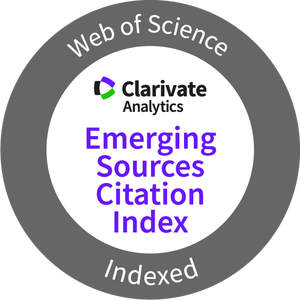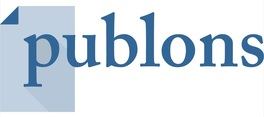Effect of stretching, strengthening exercises and walking on the management of restless legs syndrome: A cross sectional study
Abstract
Background: Restless Leg Syndrome (RLS) is one of the most common causes of sleep disorders that cause functional disability in the lower limb. Due to it is self-limiting, it forces the person to seek treatment. Unfortunately, most of the times, it is misdiagnosed by the doctors and even if it is diagnosed, till date there is no guide program or treatment in the physical therapy. There is huge dearth of knowledge regarding benefits of physical therapy in RLS.
Objective: The aim of the present study was to investigate the effect of stretching, strengthening exercises as well as walking on RLS symptoms. Also, to find out the impact of muscle strength and flexibility in relation to the severity of RLS symptoms.
Methods: An inquiry of 418 questionnaires randomly distributed was done. A total of 20 participants diagnosed with Restless Leg Syndrome were included in the current study. Pre-post assessment was done for range of motion (by goniometer), functional testing of the foot and ankle, RLS rating scale and RLS ordinal scale. Six participants received physical therapy program for a total of 4 weeks. Twenty patients who had one visit to have the measurement were studied for the correlation study.
Results: There was a significant correlation between leg muscles flexibility, strength and the severity of the symptoms. Also, there was a highly significant alleviation of symptoms in the other 6 patients.
Conclusion: It can be concluded that physical therapy is effective in relieving symptoms of RLS.
Downloads
-
Abstract1041
-
PDF508
References
Al-Jahdali, H. H., Khogeer, H. A., Al-Qadhi, W. A., Baharoon, S., Tamim, H., Al-Hejaili, F. F., Al-Ghamdi, S. M., & Al-Sayyari, A. A. (2010). Insomnia in chronic renal patients on dialysis in Saudi Arabia. Journal of Circadian Rhythms, 8(1), 1-7.
Allen, R. P., Picchietti, D., Hening, W. A., Trenkwalder, C., Walters, A. S., & Montplaisi, J. (2003). Restless legs syndrome: diagnostic criteria, special considerations, and epidemiology: a report from the restless legs syndrome diagnosis and epidemiology workshop at the National Institutes of Health. Sleep medicine, 4(2), 101-119.
Davies, A., Asa, G., & Kidd, C. (2001). Human physiology: applied physiology. Harcourt publishers.
Aukerman, M. M., Aukerman, D., Bayard, M., Tudiver, F., Thorp, L., & Bailey, B. (2006). Exercise and restless legs syndrome: a randomized controlled trial. The Journal of the American Board of Family Medicine, 19(5), 487-493.
Aurora, R. N., Kristo, D. A., Bista, S. R., Rowley, J. A., Zak, R. S., Casey, K. R., Lamm, C. I., Tracy, S. L., & Rosenberg, R. S. (2012). The treatment of restless legs syndrome and periodic limb movement disorder in adults—an update for 2012: practice parameters with an evidence-based systematic review and meta-analyses: an American Academy of Sleep Medicine Clinical Practice Guideline. Sleep, 35(8), 1039-1062.
BaHammam, A., Al-sharani, K., Al-zahrani, S., Al-shammari, A., Al-amri, N., & Sharif, M. (2011). The prevalence of restless legs syndrome in adult Saudis attending primary health care. General hospital psychiatry, 33(2), 102-106.
Christopher, G. (2007). Text book of clinical neurology: Etiological categories of neurological diseases. Elsevier Health Sciences.
Dinkins, E. M., & Stevens-Lapsley, J. (2013). Management of symptoms of Restless Legs Syndrome with use of a traction straight leg raise: A preliminary case series. Manual therapy, 18(4), 299-302.
Gupta, R., Dhyani, M., Kendzerska, T., Pandi‐Perumal, S. R., BaHammam, A. S., Srivanitchapoom, P., Pandey, S. & Hallett, M. (2016). Restless legs syndrome and pregnancy: prevalence, possible pathophysiological mechanisms and treatment. Acta Neurologica Scandinavica, 133(5), 320-329.
Hays, K. F. (2021). Integrating Exercise, Sports, Movement, and Mind: Therapeutic Unity. Routledge.
Hening, W. A. (2004). Subjective and objective criteria in the diagnosis of the restless legs syndrome. Sleep medicine, 3(5), 285-292.
Kline, C. E., Hillman, C. H., Sheppard, B. B., Tennant, B., Conroy, D. E., Macko, R. F. & Erickson, K. I. (2021). Physical Activity and Sleep: An Updated Umbrella Review of the 2018 Physical Activity Guidelines Advisory Committee Report. Sleep Medicine Reviews, 101489.
Kushida, C. A. (2007). Clinical presentation, diagnosis, and quality of life issues in restless legs syndrome. The American journal of medicine, 120(1), S4-S12.
Lewis P. Rowland. (1995) Merritt's. Text book of neurology: sleep disorders. June M. Fry. 142, 877-878.
Mirghani, H. O., Amirthalingam, P., & Mohammed, O. S. (2016). The effect of restless leg syndrome on diabetes control among type-2 diabetic patients in the Northwest region of Saudi Arabia. Journal of Diabetology, 3, 3.
Mitchell, U. H., Myrer, J. W., Johnson, A. W., & Hilton, S. C. (2011). Restless legs syndrome and near-infrared light: an alternative treatment option. Physiotherapy theory and practice, 27(5), 345-351.
Montplaisir, J., Allen, R. P., Arthur, W., & Ferini-Strambi, L. (2010). Restless legs syndrome and periodic limb movements during sleep. In Principles and Practice of Sleep Medicine: Fifth Edition, Elsevier Inc.
Newman, C. (2014). Using REBT in the treatment of restless leg syndrome: A case-study. Journal of Rational-Emotive & Cognitive-Behavior Therapy, 32(2), 139-149.
Silber, M. H., & Avidan, A. Y. (2018). Treatment of restless legs syndrome and periodic limb movement disorder in adults. Helsebiblioteket.
Silber, M. H., Krahn, L. E., & Morgenthaler, T. I. (2016). Sleep medicine in clinical practice. CRC Press.
Wali, S. O., & Abaalkhail, B. (2015). Prevalence of restless legs syndrome and associated risk factors among middle-aged Saudi population. Annals of thoracic medicine, 10(3), 193-198.
Wali, S. O., & Alkhouli, A. F. (2015). Restless legs syndrome among Saudi end-stage renal disease patients on hemodialysis. Saudi medical journal, 36(2), 204-210.
Wali, S. O., Krayem, A. B., Samman, Y. S., Mirdad, S., Alshimemeri, A. A., & Almobaireek, A. (1999). Sleep disorders in Saudi health care workers. Annals of Saudi medicine, 19(5), 406-409.
Youngstedt, S. D., Ito, W., Passos, G. S., Santana, M. G., & Youngstedt, J. M. (2021). Testing the sleep hygiene recommendation against nighttime exercise. Sleep and Breathing, 25(4), 2189-2196.
The works and papers that are published in this Journal are subject to the following terms:
1. The Publication Service of the University of Murcia (the publisher) has the Publication Rights (Copyright) to the published papers and works, and favors and permits the reusing of the same under the license indicated in point 2.
© Servicio de Publicaciones, Universidad de Murcia, 2013
2. The papers and works are to be published in the digital edition of the Journal under the license Creative Commons Reconocimiento-No Comercial-Sin Obra Derivada 3.0 España (legal text). The copying, using, spreading, transmitting and publicly displaying of the papers, works or publication are permitted as long as: i) the authors and original sources (Journal, publisher and URL of the publication) are quoted; ii) it is not used for commercial benefit; iii) the existence and specifications of this users license are mentioned.
3. Conditions of Self-Archiving. It is permitted and encouraged that the authors spread electronically the pre-print (before printing) and/or post-print (the revised, evaluated and accepted) versions of their papers or works before their publication since this favors their circulation and early diffusion and therefore can help increase their citation and quotation, and also there reach through the academic community.
The works and papers that are published in this Journal are subject to the following terms:
1. The Publication Service of the University of Murcia (the publisher) has the Publication Rights (Copyright) to the published papers and works, and favors and permits the reusing of the same under the license indicated in point 2.
© Servicio de Publicaciones, Universidad de Murcia, 2013
2. The papers and works are to be published in the digital edition of the Journal under the license Creative Commons Reconocimiento-No Comercial-Sin Obra Derivada 3.0 España (legal text). The copying, using, spreading, transmitting and publicly displaying of the papers, works or publication are permitted as long as: i) the authors and original sources (Journal, publisher and URL of the publication) are quoted; ii) it is not used for commercial benefit; iii) the existence and specifications of this users license are mentioned.
3. Conditions of Self-Archiving. It is permitted and encouraged that the authors spread electronically the pre-print (before printing) and/or post-print (the revised, evaluated and accepted) versions of their papers or works before their publication since this favors their circulation and early diffusion and therefore can help increase their citation and quotation, and also there reach through the academic community.

















